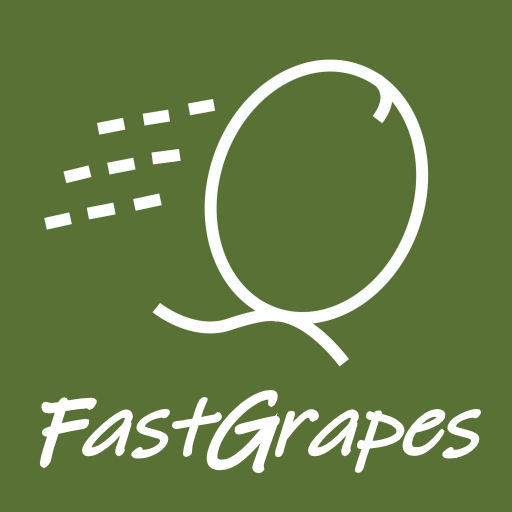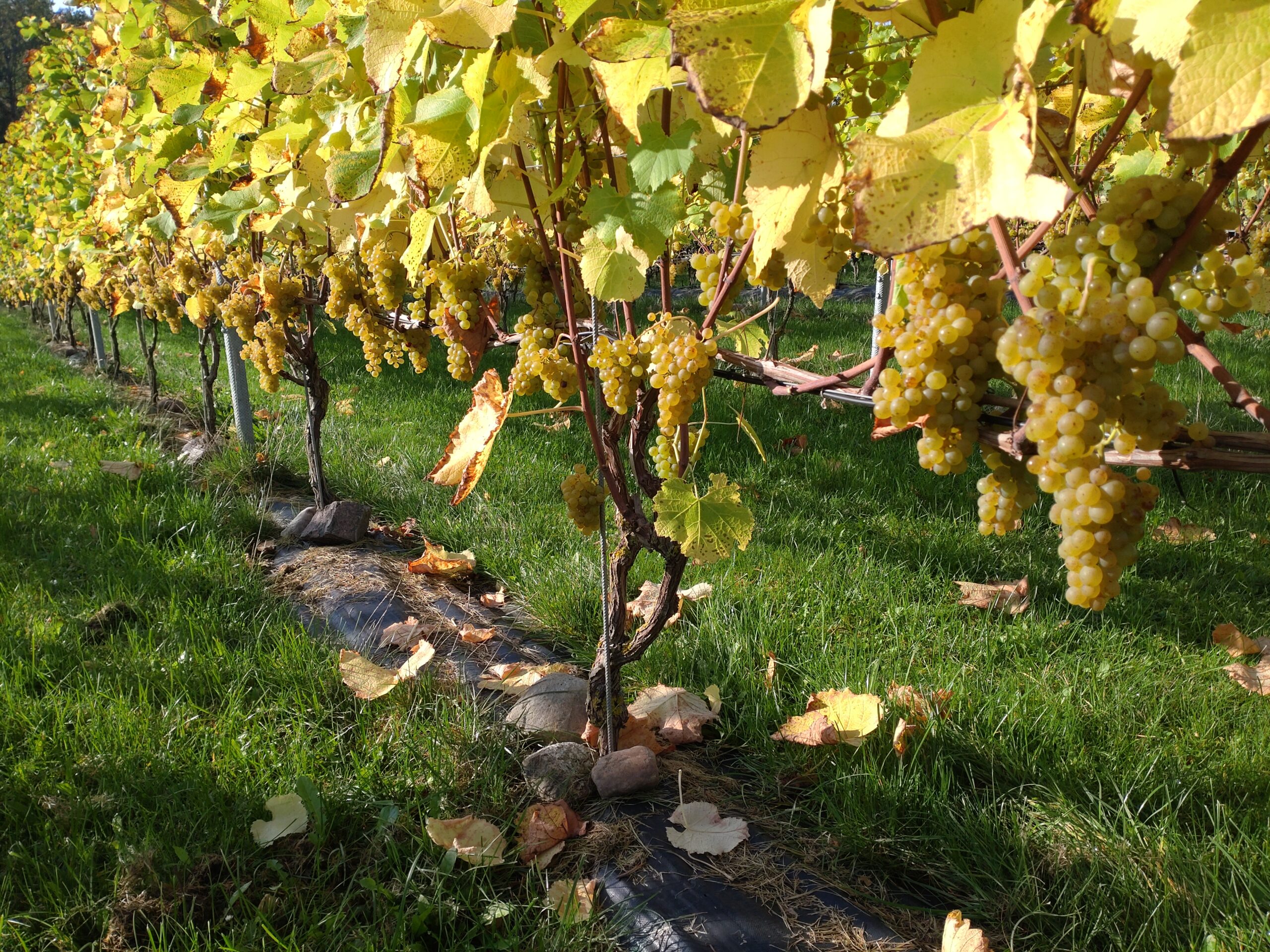
Solaris på Vrangbækgaard
Den rette PIWI på rette sted
Referencen er Solaris
Solaris modner i Danmark i løbet af 95 dage fra blomstring til høst, hvilket svarer til ca. 1. oktober. Det betyder, at den modner stabilt hvert år med et godt udbytte og god syre og aroma.
I Sydtyskland (Rheinland-Pfalz) modner Solaris midt i august.
Derfor screener FastGrapes planterne på det samme tidspunkt i håbet om, at de planter, der modner samtidig med Solaris i Sydtyskland, også kan modne i Danmark 6 uger senere.
Dette skal selvfølgelig efterprøves i praksis i et antal test plantninger flere steder i Danmark.
Modning af Solaris i Danmark et varmt og koldt år
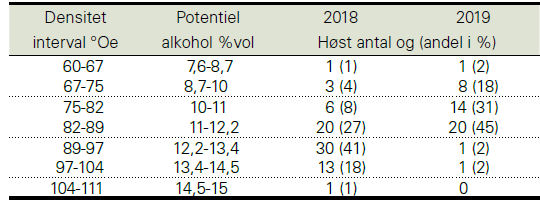
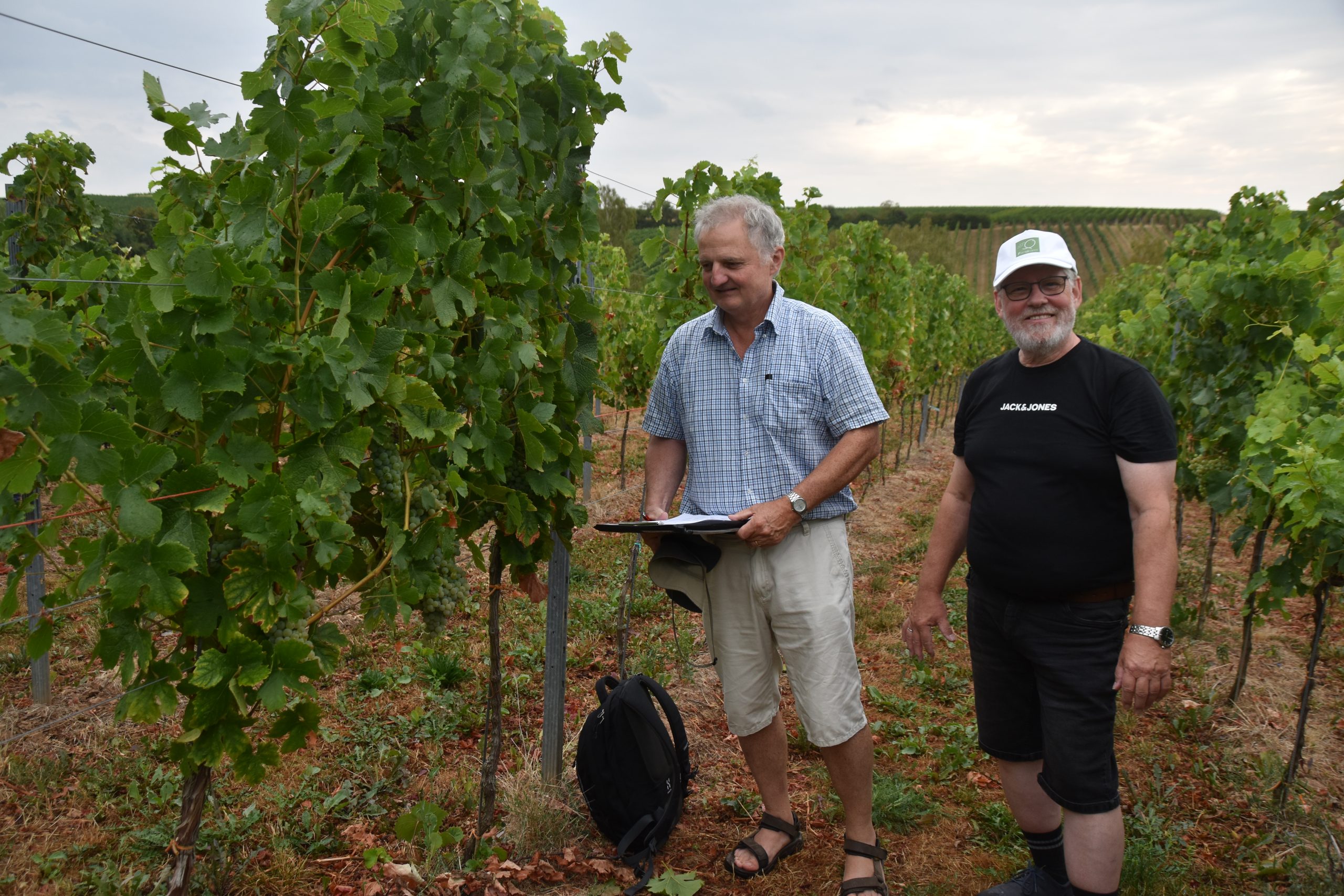
Screening og testplantning
2020 |
5000 planter screenet, 25 udvalgt, plantet 2022 |
2021 |
3500 planter screenet, 6 udvalgt, plantet 2023 |
2022 |
6000 planter screenet, 10 udvalgt, plantet 2024 |
2023 |
5000 planter screenet, 17 udvalgt, plantes 2025 |
… |
? |
2030 |
De første kommercielt tilgængelige sorter klar til salg? |
Selektionskriterier
Et antal parametre vurderes på moderplanterne ved JKI.
- Sundhed: moderplanten skal have en sund løvvæg med ingen eller næsten ingen sygdomstegn ved ubeskyttet dyrkning på friland under højt sygdomstryk fra omgivelserne. Genetiske markører bruges til at fastslå tilstedeværelsen af kendte modstandsdygtige gener
- Udbytte og frugtkvalitet: Totaludbytte og vækstparametre som antal klaser, klasernes størrelse og struktur (tæthed). Bærstørrelse og kvalitet (sukkerindhold og kemisk sammensætning) samt smagskarakteristik.
- Vækstparametre: Voksekraft og skudstruktur. Planten skal være nem at beskære og passe (opret vækst og få sideskud).
- Vinkvalitet: De udvalgte planter høstes og mikrovinificeres, og kvaliteten af vinen vurderes af et smagepanel.

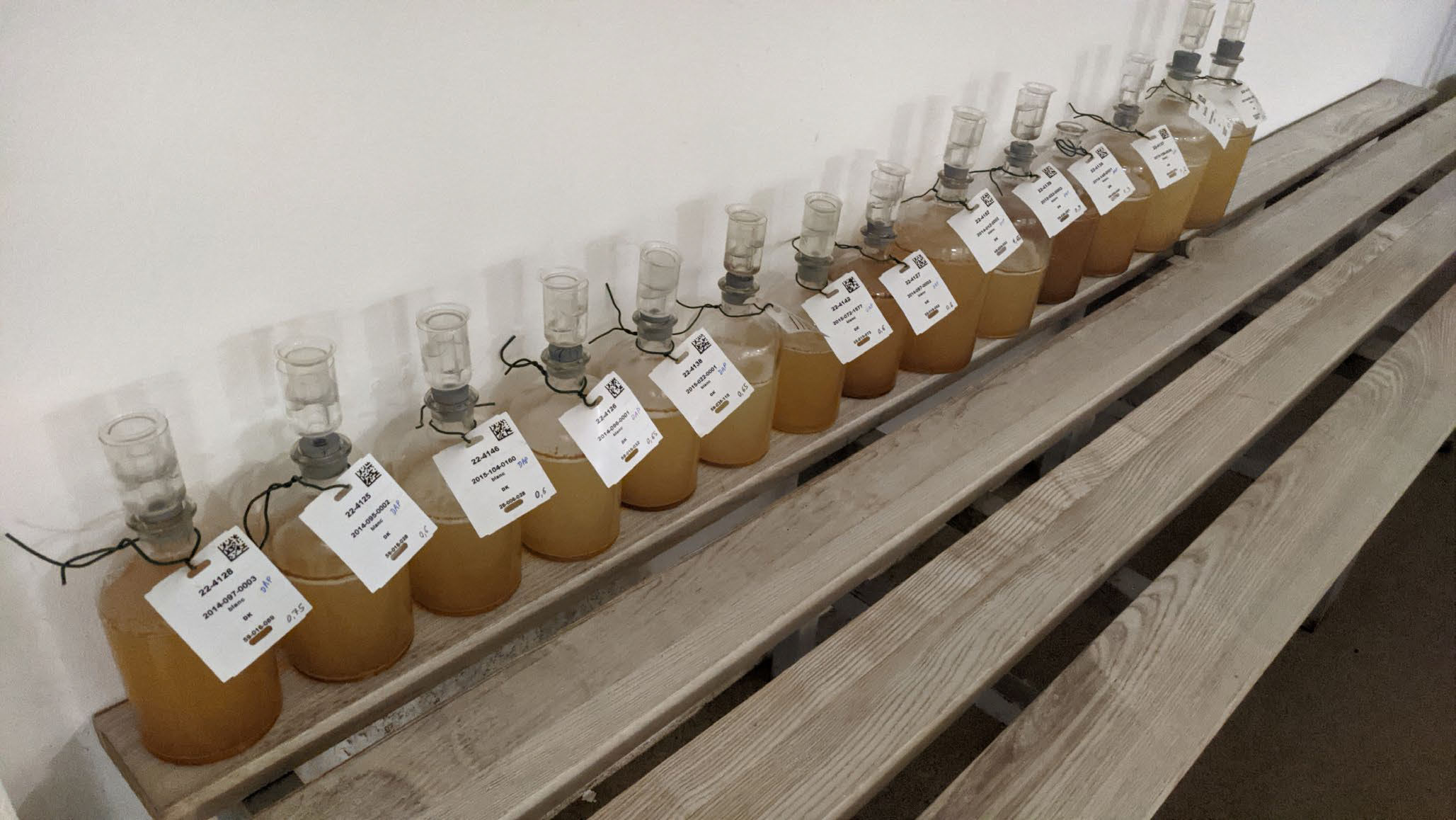
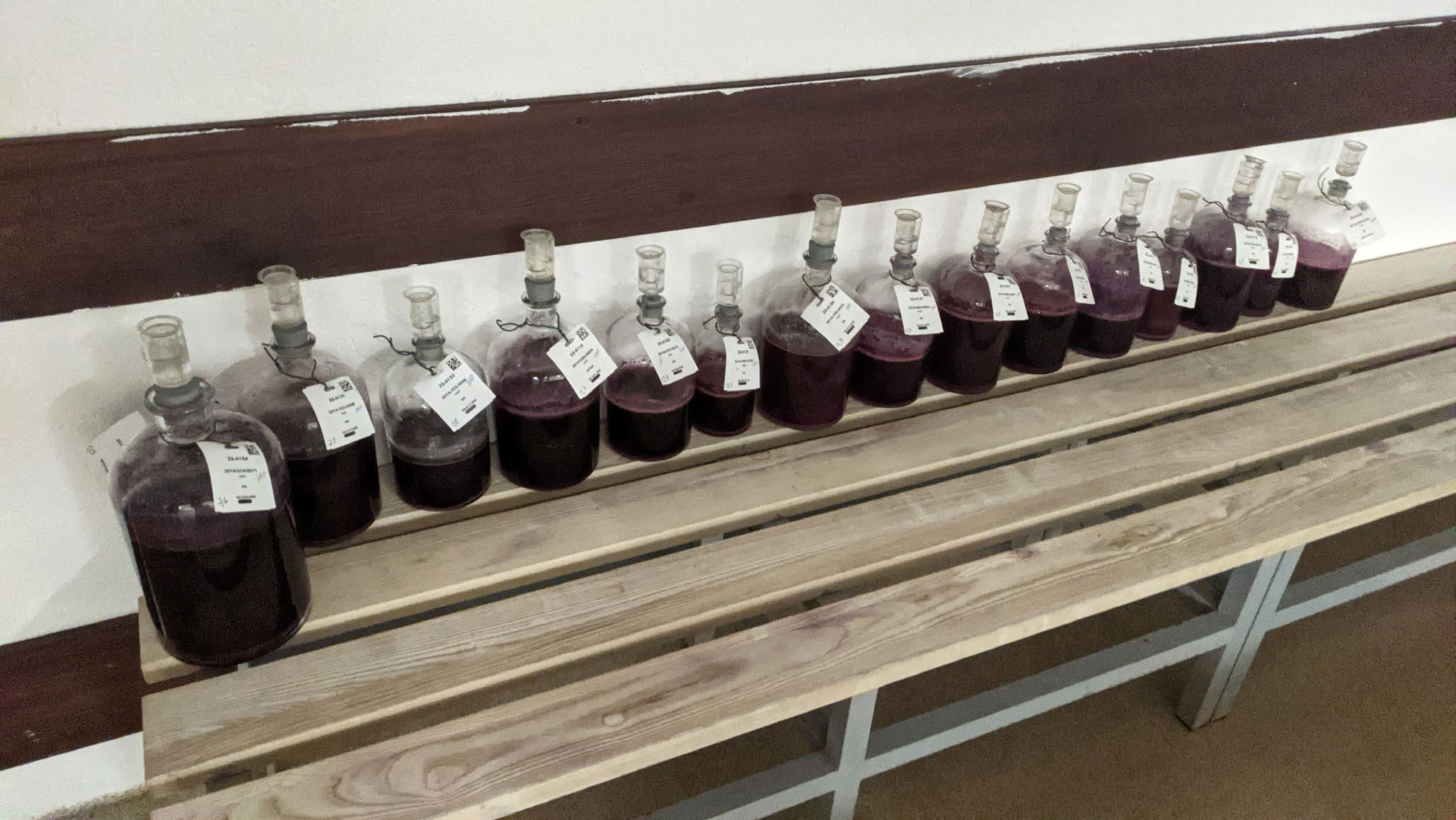
Fast track strategien
Processen med udvælgelse og test tager normalt mange år, før de endelige planter kan godkendes og frigives til salg i planteskolerne.
Her er det normale forløb hos JKI:
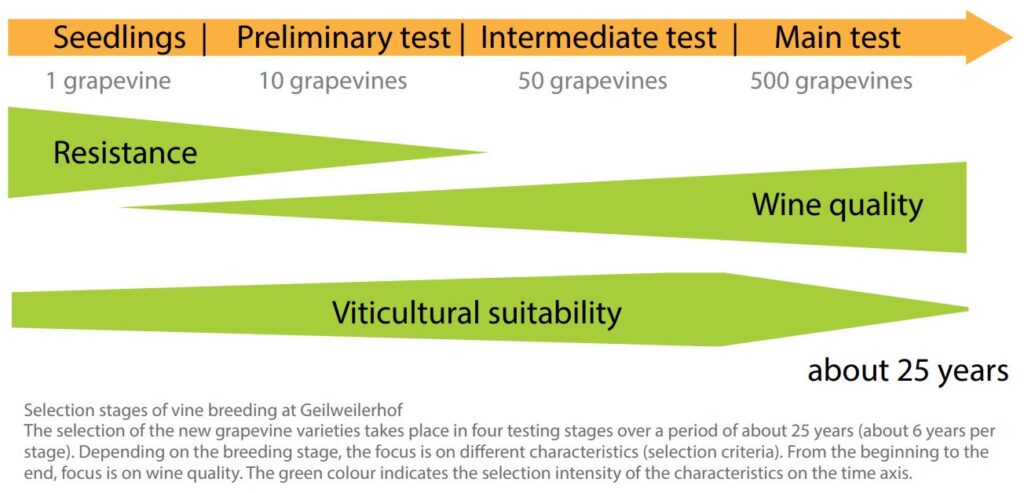
Vi prøver at forkorte og optimere dette forløb ved at følge en ’fast-track’ strategi, hvor der høstes så meget skudmateriale som muligt direkte fra moderplanten (oftest ca. 40 nodier fra hver plante). Disse podes på SO4 rodstokke og fordeles som barrodsplanter til så mange testmarker som muligt. Herved opnår FastGrapes i løbet af få år en bred erfaringsmængde, der kan anvendes som basis for den endelige udvælgelse af de planter, der skal registreres som nye sorter.
De første planter fordeles til 10 lokationer. 6 i Danmark, 2 i Sverige, og 2 i Tyskland. Efterfølgende er der der udvidet med yderligere 6 lokationer i Danmark, Nord Tyskland, Belgien, Norge og Letland.
Efter 2-3 års høst (år 5 efter plantning) udvælges de endelige kandidater, der skal opformeres og igennem storskala test på 5 lokationer med 200 af hver plante for at afprøve industriel høst og vinificering.
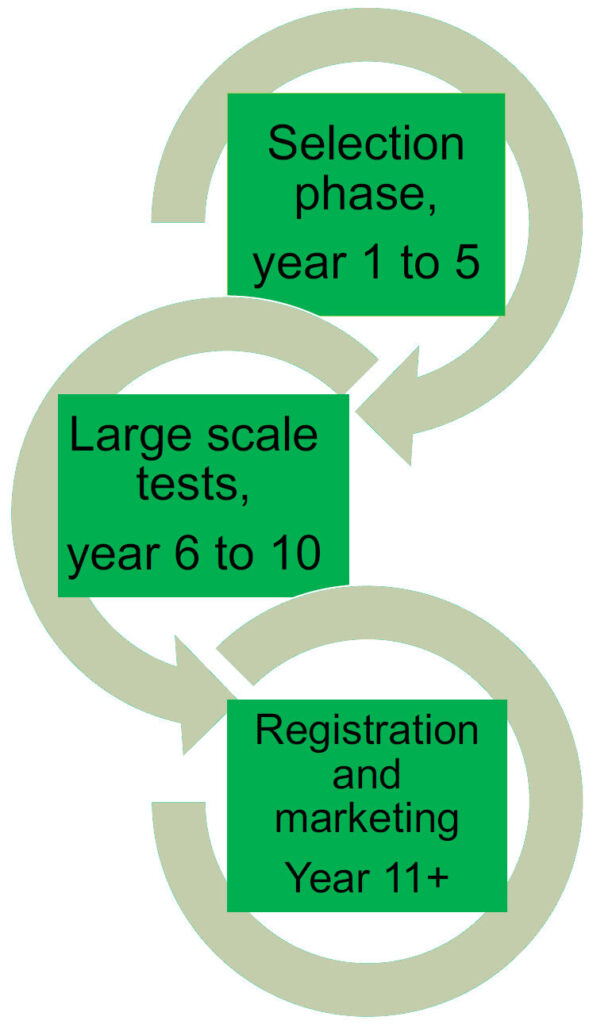
Year 1 to 5 |
|
Year 6 to 10 |
|
Year 11 to 15 |
|
Ambitionen for fast-track fremgangsmåden er at nå frem til nye sorter i løbet af 10 år fra udvælgelsen af moderplanterne i frilandsmarkerne.
